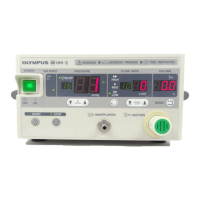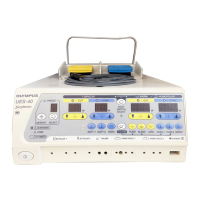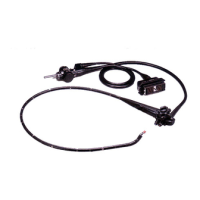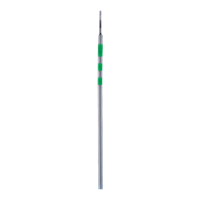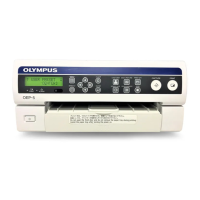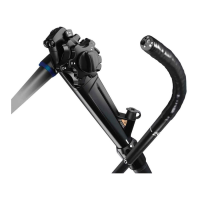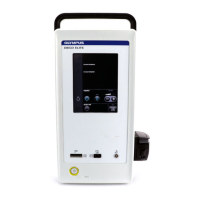Chapter 5 Operation
41
HIGH FLOW INSUFFLATION UNIT UHI-3
Chapter 5 Operation
The operator of this instrument must be a physician or medical personnel under
the supervision of a physician and must have received sufficient training in
clinical endoscopic technique.
This manual, therefore, does not explain or discuss clinical endoscopic
procedures. It only describes basic operation and precautions related to the
operation of this instrument.
• Wear personal protective equipment to guard against
dangerous chemicals and potentially infectious material.
During operation, wear appropriate personal protective
equipment, such as eye wear, a face mask,
moisture-resistant clothing and chemical-resistant gloves that
fit properly and are long enough so that your skin is not
exposed.
• If the UHI-3 unit is set to “insufflation” for a prolonged period
of time without a CO
2
insufflation connection, the
decompressing devices may freeze. Under these conditions,
operation of the UHI-3 unit, including insufflation, may be
impossible. Never use the unit without a CO
2
insufflation
connection.
• The insufflation tube must be sterilized prior to each use and
handled aseptically during the procedure.
• Perform the pressure settings only after carefully checking
the patient’s condition. Excessive pressure is dangerous and
may result in complications.
• Always select LOW flow mode when a veress needle is
connected. If HIGH or medium is selected, a large volume of
CO
2
gas will be released. If the veress needle is not correctly
inserted, complications such as subcutaneous swelling or
gas embolism may occur.
• To measure the abdominal pressure correctly, always select
LOW flow mode when an instrument which has a large flow
resistance (such as a veress needle) is connected.
• Monitor the condition of the patient carefully, and make
provisions for unexpected situations.
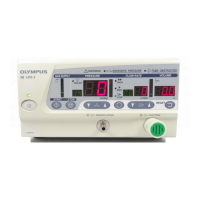
